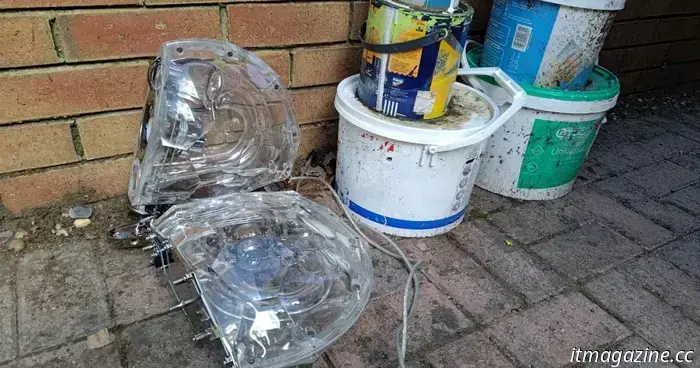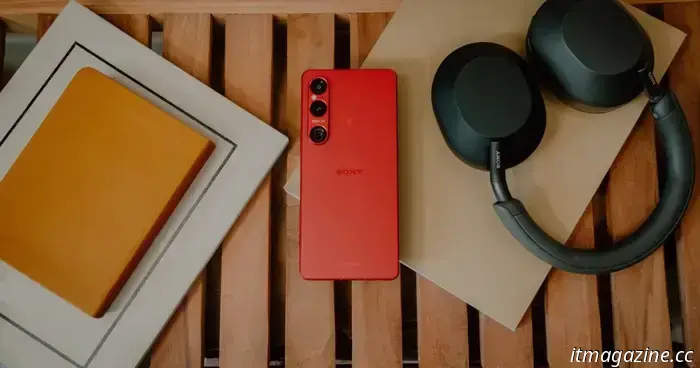
I was so fond of these speakers that I injured myself while attempting to repair them.
Sigh. Today is genuinely a sad day. I had to bid farewell to my Harman Kardon GLA-55 2.0 PC speakers. Having served me faithfully for over 15 years, I have tried to repair them and even made some unsuccessful attempts at fixing them myself. However, I’ve come to realize that their time has passed, and they will soon join the paint cans on the next trip to the dump (for recycling).
I have a new pair on the way, which may not sound as good or possess the same iconic appearance, but they will function properly, which is arguably more crucial. Nonetheless, it’s still a sorrowful day and deserving of a tribute. While technology is ever-changing, we all have that one device, peripheral, or component that holds a special place in our hearts, and for me, those extraordinary Harman Kardon speakers were one of them.
I had just written an article for PCWorld about why these speakers were so exceptional. A fitting farewell, albeit an ironic one. Let’s give them one last tribute.
Appreciation for the absurd
The GLA-55s are a distinct set of speakers that were given to me in the early 2010s by my then-boss, who had no use for them in his even more impressive audiophile setup. They are large, heavy, and utterly absurd. They never blended into my setup or looked right next to my more modern, less crystalline monitors and other equipment.
However, they produced fantastic sound and served as a wonderful conversation starter. Among all the bizarre gadgets, gizmos, and components I’ve encountered over my 20 years of writing about PCs and hardware, my Harman Kardon speakers always attracted the most attention from visiting friends and family.
They were not just speakers; they were also artistic creations with powerful bass and clear highs. TechPowerUp even referred to them as the coolest speakers ever in their coverage back in the day.
But after years of use, they began to show their age. The crystal-like plastic had scratches, the soft-surface tweeter had dents from curious little fingers, and ultimately, there was a hole in the rubber surrounding the main drivers.
While attempting to capture some photos for the previously mentioned article about their longevity, I accidentally brushed my finger against the rubber, causing it to crumble into a sticky, powdery mess. With the lightest touch, I had inadvertently ruined the airtight chamber around the driver that produced such impressive sound. In a moment of carelessness, I destroyed this speaker.
But it seems this wasn’t my first offense. A closer inspection of the other speaker revealed similar wear on the rubber, which was already beginning to separate from the plastic surround. Neither speaker was in good condition, and a quick search online indicated that, at best, I shouldn’t be using them until they were repaired, if they could be repaired at all.
A glimmer of hope
My first attempt to contact Harman Kardon was unfruitful. These speakers had been discontinued for years, so they couldn’t repair them or provide any assistance. However, they did have a third-party company in the UK that handled repairs. I was told they might be able to help.
But no. The parts needed to replace the specific speaker surround were no longer available, so they couldn’t assist me either.
What about a third-party alternative? I searched, but the drivers for these speakers were a very specific 3.1 inches in diameter. I couldn’t find anything that matched the right size… until I did.
It turned out a Dutch speaker repair shop had foam replacement driver surrounds for my specific Harman Kardon GLA-55 speakers. What a stroke of luck! I ordered a pair to be shipped promptly and eagerly awaited their arrival two weeks later.
In the meantime, I reached out to the original repair shop but was taken aback by the potential cost. It would be $150 (equivalent) just to assess whether they could repair the speakers. The actual repair estimates were several hundred more, plus shipping. While these speakers might have been valued at $1,000 when new, I could acquire a comparable set of speakers for the same cost as the repairs.
But I’m determined. Before I throw these speakers away, I should make one more attempt at fixing them.
Perhaps I can repair high-quality electronics myself...
I’ve been disassembling graphics cards, laptops, and other complex PC hardware for years. Surely, with the proper care, I could give repairing these a shot. So I set to work.
I peeled off the rubber feet from underneath, unscrewed the screws, and took apart the base housing. I unscrewed the circuit board and encountered solder—unleaded solder, which meant my hobbyist soldering iron couldn’t heat it sufficiently to melt it. I didn’t have a solder wick on hand and burned myself twice due to my lack of experience.
After two hours






Other articles
 Your upcoming smartphone has received a significant upgrade in performance and battery life.
TSMC plans to begin mass production of 2nm chips by the fourth quarter of 2025.
Your upcoming smartphone has received a significant upgrade in performance and battery life.
TSMC plans to begin mass production of 2nm chips by the fourth quarter of 2025.
 Three rom-coms on Netflix that you should check out in May 2025.
Our selections for three romantic comedies on Netflix to enjoy in May feature a baseball-themed drama, a comedy starring Ryan Gosling, and a delightful tale about an engagement.
Three rom-coms on Netflix that you should check out in May 2025.
Our selections for three romantic comedies on Netflix to enjoy in May feature a baseball-themed drama, a comedy starring Ryan Gosling, and a delightful tale about an engagement.
 Ram brings back the 1500 Express trim as a budget-friendly choice.
Ram is bringing back the Ram 1500 Express trim as a budget-friendly choice.
Ram brings back the 1500 Express trim as a budget-friendly choice.
Ram is bringing back the Ram 1500 Express trim as a budget-friendly choice.
 As game prices increase, I need to become a more selective player.
The cost of video games is increasing, which is prompting more players to be careful and thoughtful shoppers.
As game prices increase, I need to become a more selective player.
The cost of video games is increasing, which is prompting more players to be careful and thoughtful shoppers.
 Waymo is establishing the foundation for a revolution in robotaxis.
It’s a lengthy journey, but Waymo is slowly progressing towards its long-aspired objective.
Waymo is establishing the foundation for a revolution in robotaxis.
It’s a lengthy journey, but Waymo is slowly progressing towards its long-aspired objective.
 Sony's Xperia 1 VII is on the way, but its worldwide launch may encounter postponements.
The Sony Xperia 1 VII will be arriving soon, but it appears that many of us may have to wait longer than originally anticipated.
Sony's Xperia 1 VII is on the way, but its worldwide launch may encounter postponements.
The Sony Xperia 1 VII will be arriving soon, but it appears that many of us may have to wait longer than originally anticipated.
I was so fond of these speakers that I injured myself while attempting to repair them.
When my 15-year-old Harman Kardon speakers began to malfunction, I realized I needed to attempt a repair. However, it turned out to be in vain.
